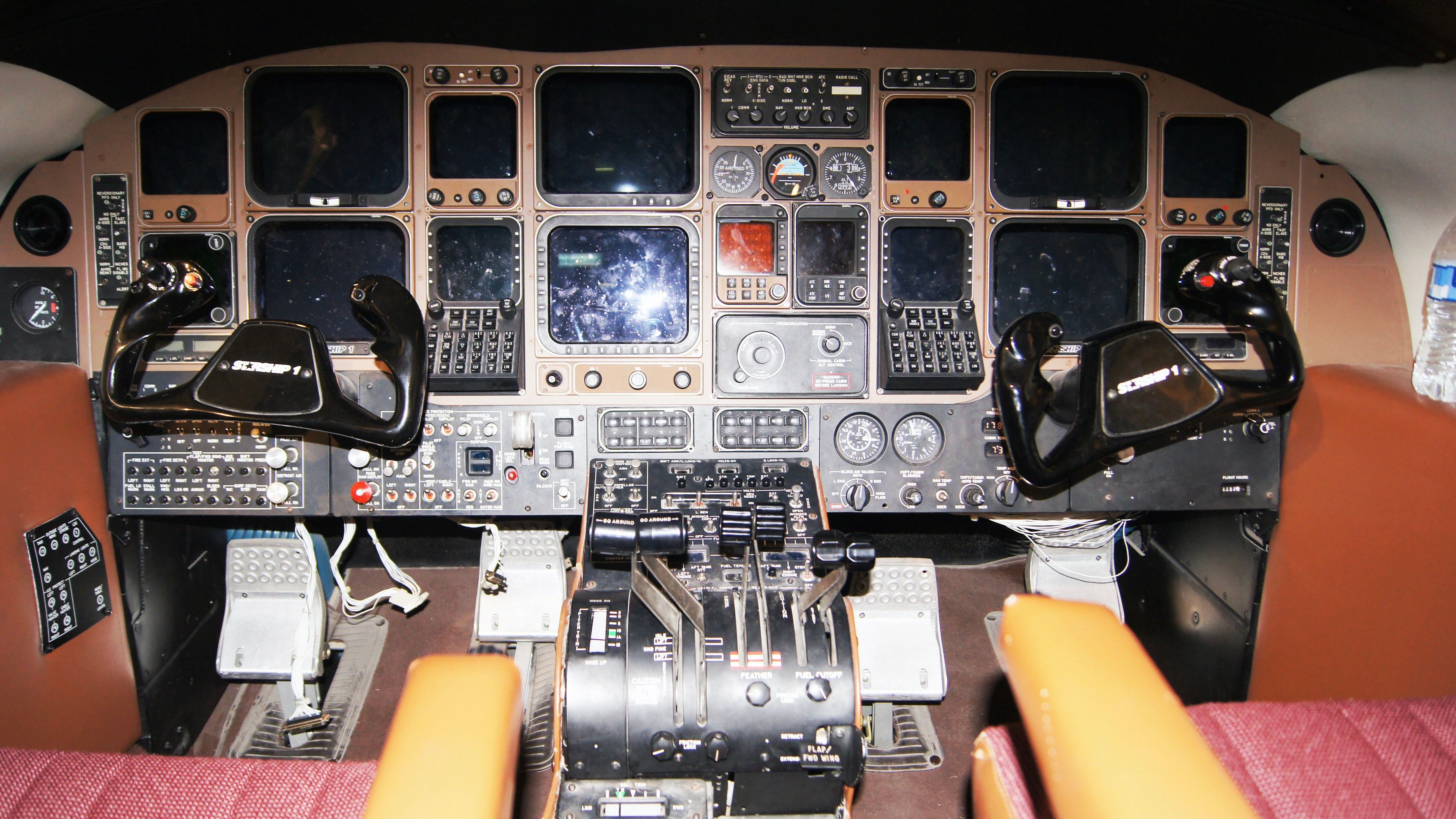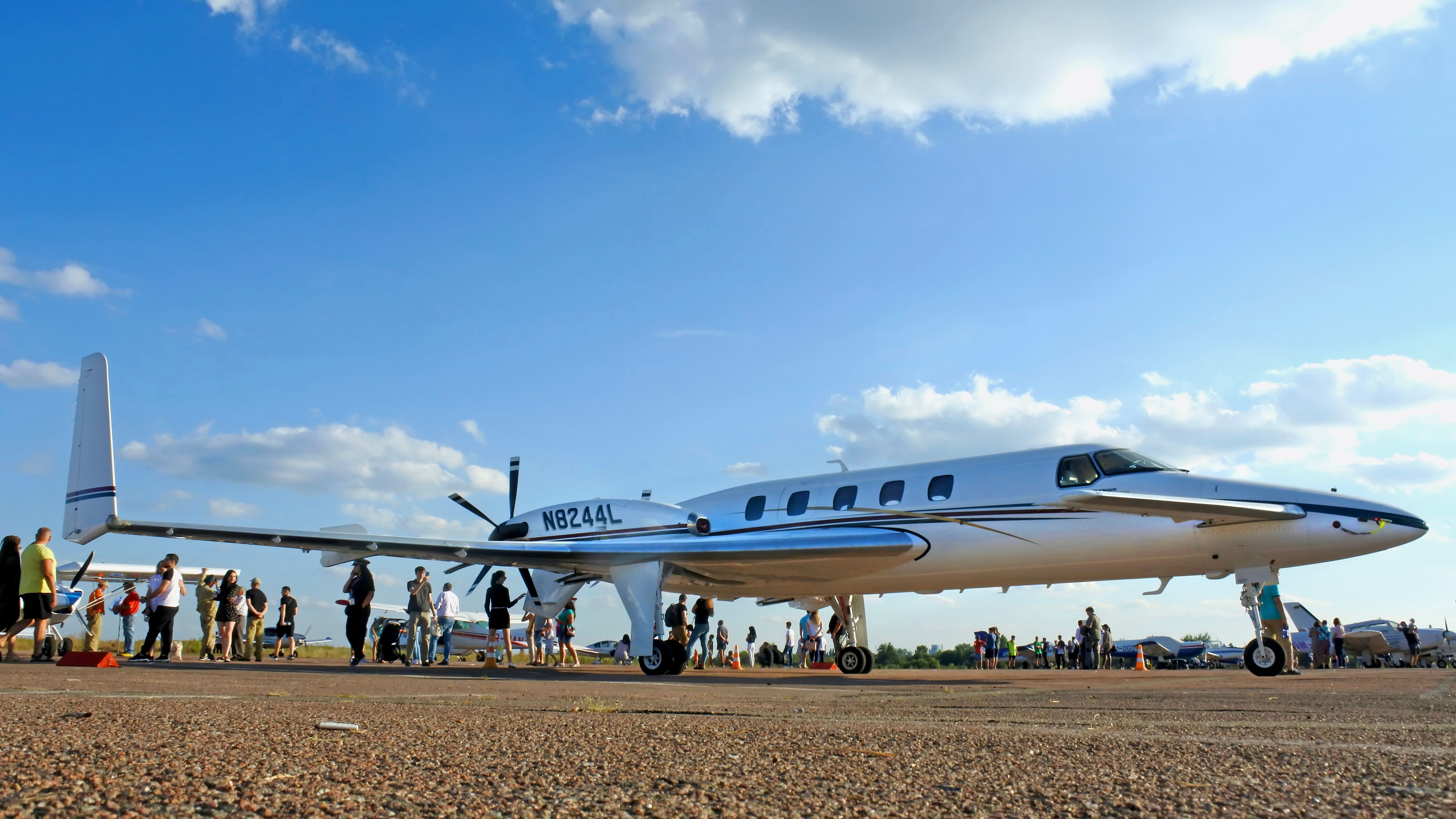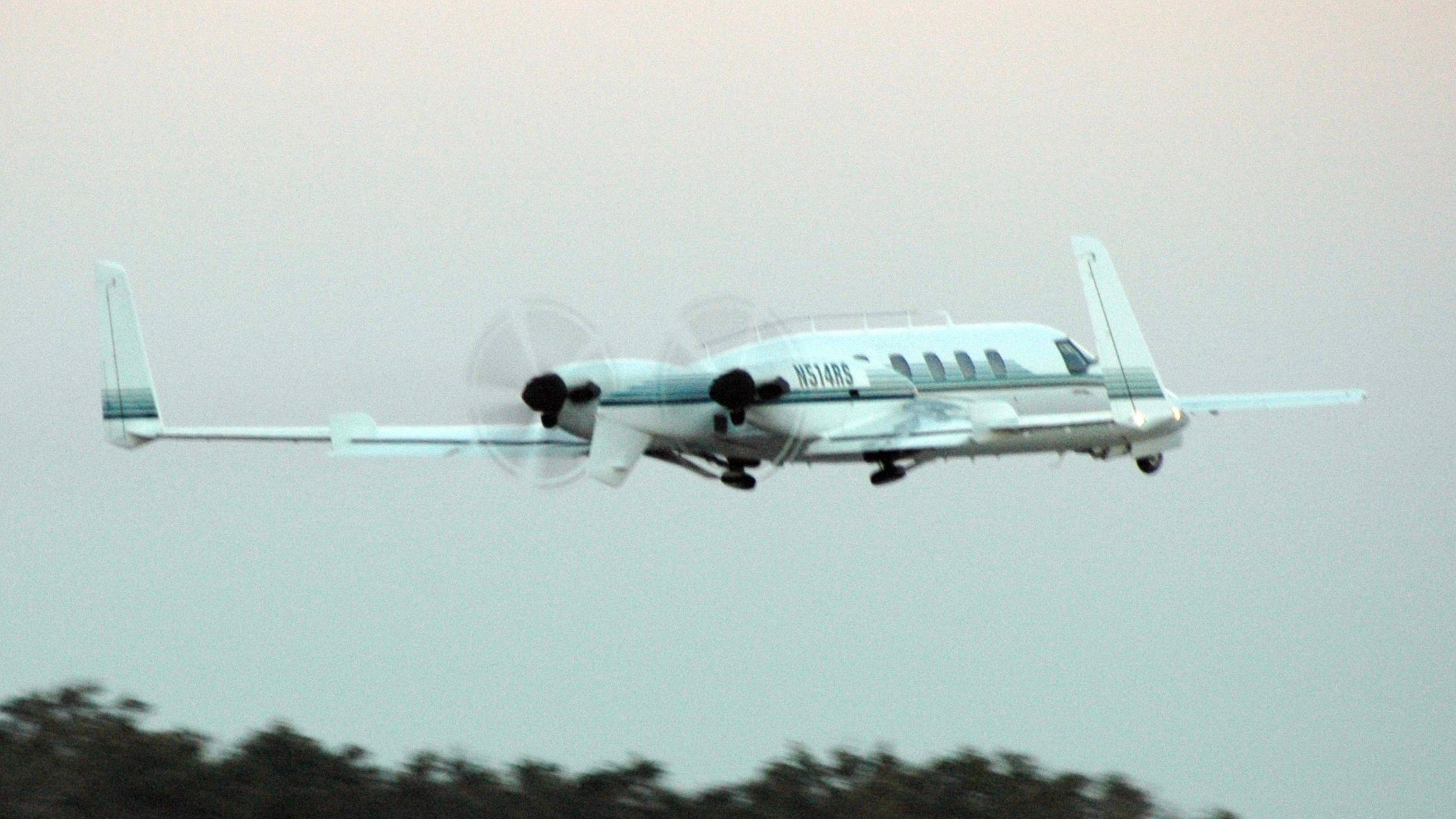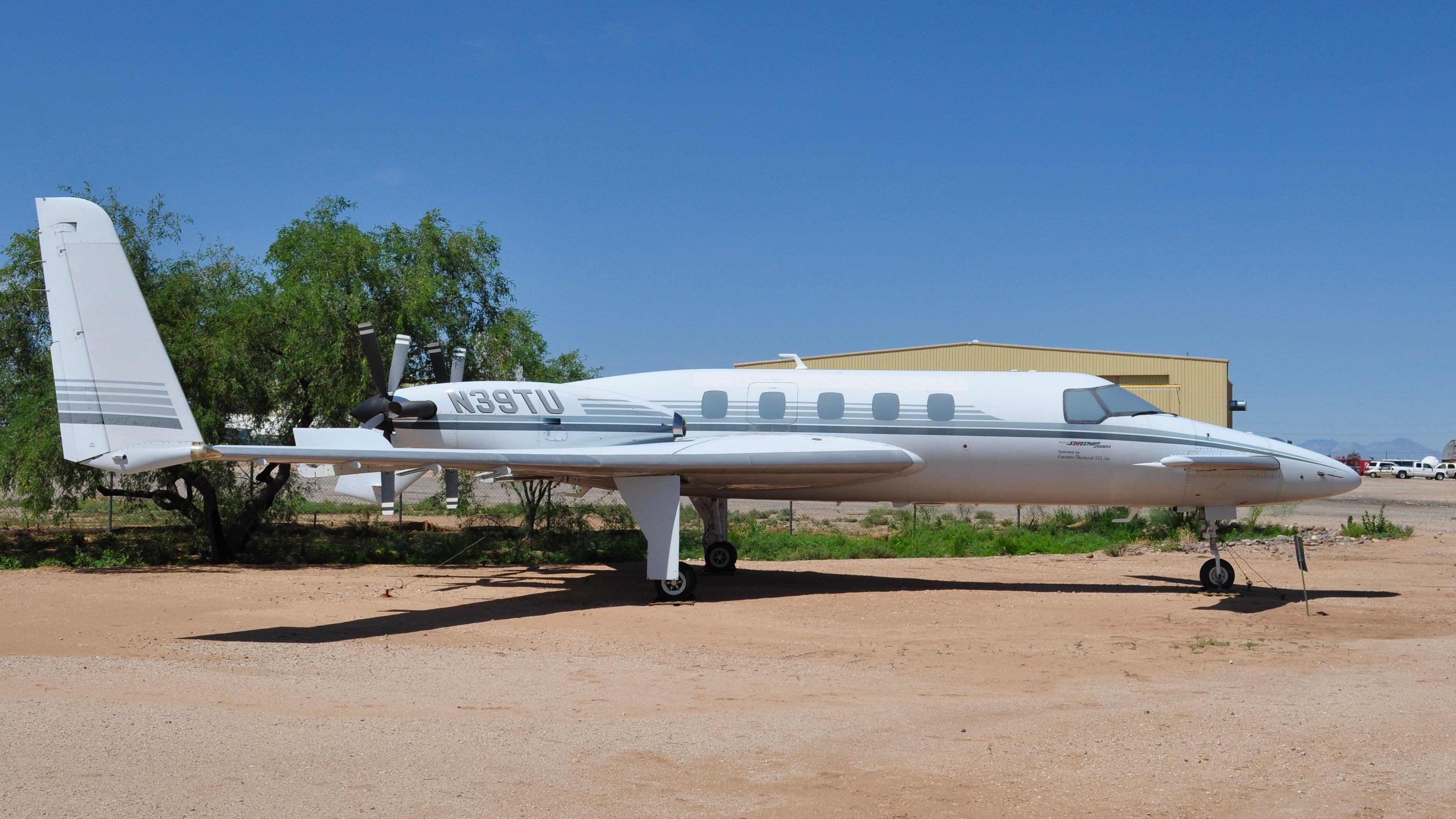Summary
- The Beechcraft Starship had unique features and an innovative design using composite materials.
- Several economic factors, including low numbers of the Starship being sold, led to production stopping in 1995.
- Despite most being scrapped, only six airworthy Starships remain, with others donated for display.
The Beechcraft Starship was a twin-turboprop pressurized business aircraft designed by Beech Aircraft Corporation. It was an innovation of its time, using composite materials for its airframe, and had an unusual design. However, it didn’t sell well, and production ceased in 1995, just six years after its first flight. Only 53 of the aircraft were built, but are there any still flying today?
A design in the making
The Starship was originally designed as a successor to the King Air series with a larger, quieter cabin that could hold six to eight passengers and fly faster. The aircraft’s weight was to be reduced, its stability improved, and it was very efficient. It was first developed in 1979.
Photo: Iryna Nazarova | Shutterstock
The strong and lightweight composite structure could avoid structural weakness and corrosion like standard aircraft. The cabin was quieter, too, due to the non-transmission of noise and vibration.
Development and prototypes
The Starship had a long development process, and while this continued, three prototypes were made:
- NC-1: Used for aerodynamic testing. It had an ejection seat and conventional electro-mechanical avionics.
- NC-2: Used for avionics and systems testing.
- NC-3: Used for flight management systems and powerplant testing.
The NC-1’s first flight was on February 15th, 1986. The program was delayed due to the complexity of the composite construction.
Another factor was technical difficulties with the pitch damping issue and developing a stall warning system. The Starship cabin was larger than that of the King Air 350 but had a similar gross weight, which they wanted to reduce. It had cost $300 million to develop the Starship.
Innovative design
The first production aircraft flew on April 25th, 1989. Beechcraft’s Starships has several unusual features, like its canard wing configuration and pusher propeller engines that sit at the aircraft’s rear. It also did not have a central tail, like most aircraft. The Starship was fitted with Rockwell Collins Proline 4 AMS-850 avionics and was the first time an all-glass cockpit had been fitted into a business jet.
Facts and figures
General characteristics
- Crew: 1 or 2
- Capacity: 6
- Length: 46 ft 1 in (14.05 m)
- Wingspan: 54 ft 5.70 in (16.6 m)
- Height: 12 ft 1.3 in (3.94 m)
- Wing area: 281 sq ft (26.1 m2)
- Empty weight: 10,085 lb (4,574 kg) standard empty weight
- Gross weight: 15,010 lb (6,808 kg) max ramp weight
- Max takeoff weight: 14,900 lb (6,759 kg)
- Fuel capacity: 565 gallons, or 3785 lbs.
- Powerplant: 2 x Pratt & Whitney Canada PT6A-67A turboprop, 1,200 shp (890 kW) each
- Propellers: 5-bladed McCauley, 8 ft 8 in (2.64 m) diameter
Performance
- Maximum speed: 385 mph (620 km/h, 335 kn)
- Cruise speed: 353 mph (568 km/h, 307 kn)
- Stall speed: 112 mph (180 km/h, 97 kn) max weight with flaps retracted & idle power
- Minimum Control Speed: 108 mph (174 km/h, 94 kn) flaps retracted
- Range: 1,742 mi (2,804 km, 1,514 nmi)
- Service ceiling: 41,000 ft (12,500 m)
- Rate of climb: 2,748 ft/min (13.96 m/s)
- Wing loading: 53 lb/sq ft (260 kg/m2)
- Power/Mass: 6.2 lb/shp
 Further issues
Further issues
After the Federal Aviation Administration (FAA) certified the aircraft, only 11 Starships were sold over a three-year period. Beechcraft thought the problem was due to the economic downturn, the tax on luxury items, and the aircraft being seen as a ‘novelty.’
“We made the business decision that because of the low number of the aircraft in service and the specialized parts necessary to keep the aircraft flying, that it did not make sense from a business standpoint to continue to support the aircraft.”
The price of a Starship in 1989 was $3.9 million, similar to that of a Cessna Citation V or a Learjet 31, which were both faster at cruise speed. In 1991, Beechcraft tried offering the aircraft on a two-year lease scheme to boost sales and, at one point, offered free maintenance, but this did not help matters.
Ceased production
The last Starship NC-53 was produced in 1995. In 2003, Beechcraft decided that supporting such a small fleet of aircraft was not worth the cost and scrapped the aircraft. They were sent for destruction to the Evergreen Air Center in Arizona. Beechcraft worked with private owners who had Starships and could have them replaced by the Premier I aircraft instead. In 2004, Raytheon sold its inventory of parts for the aircraft to a private owner at a fraction of their value.
The end of the Starship?
Some owners of the Starship donated them to museums that would appreciate the distinctive and unusual aircraft. The eight benefactors included the Kansas Aviation Museum, the Museum of Flight in Seattle, and the Queensland Aviation Museum. One was donated to a college, and four were donated for composite testing purposes.
Interestingly, Evergreen Air Center sold eight Starships to private owners for $50,000 in 2003. These were primarily used for parts, although some were made airworthy again. In 2010, there were nine active Starships registered with the FAA, and by 2020, there were just six airworthy aircraft; five are in the US, and one is in Germany. Private owners have eight decommissioned aircraft, and 24 Starships are confirmed as dismantled or destroyed.







